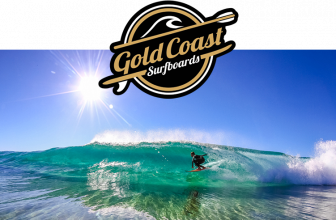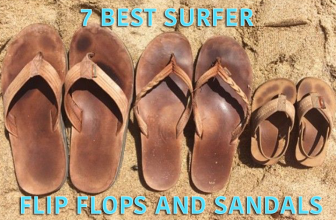
By no mean do you have to be a surfer to appreciate the beauty of a great wave.
Most beach lovers could spend hours sitting on the sand watching the hypnotic push and pull of the ocean tides.
This may be you, though have you ever pondered the thought, “How are Waves Formed?”
Many of us haven’t, but knowledge is beauty, and can enhance your wave watching experience tenfold.
Simply put, waves are formed because of the wind.
Without it, surfers would never be able to catch a wave again.
But how does the wind create an ocean so sleepless?
Does the wind know that it creates incredible waves for us surfers to enjoy?
Let’s break it down and see how these natural beauties come to be, day in and day out.
What Creates Waves
To simplify it beyond believe, waves are just energy. Waves aren’t actually water by any means, but the things that pass through the water instead. Essentially, waves are energy transmission that is caused by the wind. The wind is not alone in their creation though, as other natural factors such as earthquakes, volcanoes, and arctic ice caps melting, can have a substantial impact. The energy from these natural forces is transmitted across the water because the ocean’s surface is unobstructed. There’s really nothing to stop a wave until it reaches the shoreline.
So there are actually many types of waves in the ocean. The waves that we most commonly see are known as wind-driven waves, or waves that are the result of wind blowing over the water’s surface. Sometimes people refer to these as friction waves, as the physics of the wind is creating friction with the water beneath. Wave crests are created as wind blows towards the direction of the shoreline.
Are Waves the Same as Swells?
Wind doesn’t start right at the shoreline. It actually starts many miles out at sea in much calmer waters. The wind creates tiny ripples that eventually evolve into large waves as they reach the coast. A swell is actually an assembly of waves produced by wind. These winds that are hundreds of miles off the coast create the best waves we know.
There are a few factors that go into how big those swells will be though:
- Wind Power: The speed of the wind on the ocean’s surface
- Uninterrupted Wind: If the wind continues for a while without stopping, the more energy will build up in the swell
- The ‘Fetch’: The Fetch is the length of water over which a given wind has blown
So now that you have a basic understanding of swells, you must know that there are two types of swells: Groundswells and Windswells.
Groundswell vs. Windswell
The type of swell is judged by the time of a wave. If the period of a wave lasts longer than 13 seconds, we know that they are being created by strong winds blowing far offshore. More energy is being transferred through the water and the fetch is larger as well. These are the types of waves that give surfers long rides into shore.
Windswells, on the other hand, are wave periods under 10 seconds. These are created by winds that are close to shore. These waves aren’t nearly as consistent and are much weaker than those created by groundswells.
Pressure Systems
This brings us to pressure systems. When less air particles are present, low-pressure systems are produced. When that air is cooled and a high air particle region decreases, high-pressure systems are produced.
Low-pressure systems are the best for creating stronger waves. An equalizing motion occurs, as there aren’t as many air particles to obstruct, and better wind is generated. In a deep, low-pressure system, wind power is much faster, therefore created more waves in a system where friction is pretty tight.
High-pressure systems create the opposite effect, creating strong air motion in high-altitude regions. Obviously high-altitude winds aren’t as effective in the creation of waves, so we won’t focus on those as much.
These Pressure Systems Sound A Bit Chaotic. How do Waves Organize Themselves?
You’re right, they are very chaotic. Wind waves, in what we call “wind zones”, are completely out of order until they eventually move outside of the wind zone. Eventually, the larger and faster waves begin to overtake the smaller and slower once. This creates less waves overall, but a lower number of more powerful and unified waves.
At some point, waves are forced to organize into wave-sets. Wave-sets are defined as several waves that follow in line behind each other. The number of waves can be anywhere from a few to over 20. The time between those waves is known as the “wave period”. This whole process of organization can easily take a number of days to happen.
The longer that period of time, the cleaner and more organized those wave sets will become. If there is a wind zone that these waves hit after they’ve already emigrated from their original wind zone, they will lose energy.
Sand Banks
Once a wave finally reaches shore, that wave can easily be manipulated by a sand bank. This is why we can never be 100% sure that the waves will be quality, even with everything mentioned above. Sand banks are ridges that are placed along the ocean floor. They rise up close to the water’s surface and help to create the peaks that surfers know and love so well.
If you’ve ever seen a new wave crest at your local spot, it’s most likely because there is a new sand bank under it. The waves pump up atop the sand crests and creates waves that can be surfed. It’s not always sand banks though, as things like jetties or artificial reefs can easily affect the wave shape.
Tides Vs. Waves
There’s a common misconception that tides and waves are the same. Tides are actually a name for the collective of slow-moving waves that regularly rise and fall on the sea’s surface. These tides are not caused by wind, but by the gravitational pull of the moon and sun. Gravity is the thing that holds water in place. The gravity that the moon creates helps to pull the ocean water so that it sways and moves.
As the sun rises in the east and the moon and stars come out, waters will typically rise and fall. The moon pulling the water is known as high tide. While the moon is close to your local break, pulling the tides up, you can assume that wherever the moon is furthest from has lower tides.
What are the best types of waves for surfing?
There are three main factors that produce great waves for surfing
- A low-pressure system of waves that are created hundreds of miles offshore
- An uninterrupted, windless journey from the original wind zone to the coastline
- No offshore wind that is close to the shoreline
What is the largest wave on Earth?
How is a Rip Current Formed?
The ocean water that is tossed up on the beach will eventually flow back out into the deep. There is no method to this flow though, and the water will naturally move back out through whatever route is easiest. This can be through a jetty or a strange break in a sandbar.
Essentially, that water will funnel through a narrow stream on the ocean floor, creating a pull in the opposite direction. These rip currents are usually darker than the surrounding water and easier to spot.
What are the different types of breaks?
There are four main types of beach breaks that create different waves:
- Beach Breaks
- Reef Breaks
- Point Breaks
- Rivermouths
Beach Breaks are where waves break over the sand and are the most commonly known.
Reef Breaks are where waves break over a rock bottom.
Point Breaks are where the waves hit a stretch of land at an angle and break semi-parallel to the shoreline rather than towards it.
Rivermouth waves will break as a river deposits the water at the shoreline.
Right Hand Breaks Vs. Left Hand Breaks
This is simply the direction that the wave is breaking. It is judged from the perspective of a surfer or someone out at sea, not by someone who is standing on the beach. If a wave is breaking from left to right, and a surfer has to ride it to the right, it is a right hand break.
Weirdly enough, there are waves that peel off in both directions at the same time. These are called A-Frame Waves.






